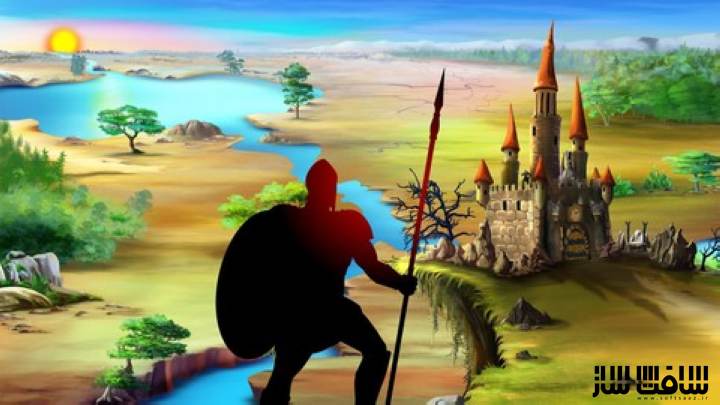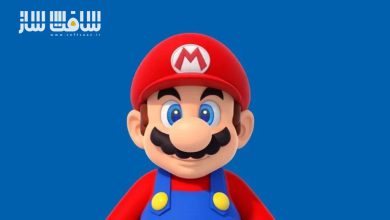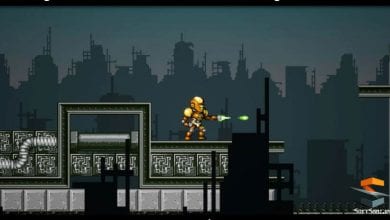آموزش مسلط شدن به طراحی سطوح در Unreal Engine و Unity
Udemy – Level Design Master Class: All in One Complete Course

آموزش مسلط شدن به طراحی سطوح
در این آموزش مسلط شدن به طراحی سطوح در Unreal Engine و Unity ، همه چیز مورد نیاز برای تبدیل شدن به یک طراح سطح حرفه ایی در صنعت بازی را یاد خواهید گرفت. این دوره نه تنها اصول و مبانی را یاد می گیرید ، بلکه بهترین شیوه هایی که به یک طراح سطح عالی تبدیل شوید را می آموزد.
پس از اتمام دوره ، تضمین خواهیم کرد که به یک طراح سطح خیلی بهتر خواهید شد و قادر خواهید بود اصول اساسی را برای طراح های خود اعمال کنید. این دوره آموزشی توسط تیم ســافــت ســاز برای شما عزیزان تهیه شده است.
عناوین اصلی آموزش مسلط شدن به طراحی سطوح :
- مقدمه ایی بر طراحی سطح
- تنظیم آنریل انجین
- تنظیم یونیتی
- طراحی Rational (منطقی) در مقیاس بزرگ
- کامپوزیشن در طراحی سطح
- راهنمای کاربران
- معماری در طراحی سطح
- ورک فلوی یک طراح سطح
- نحوه ساخت یک سطح
- ایجاد سطح نهایی
عنوان دوره : Udemy – Level Design Master Class: All in One Complete Course
سطح : متوسط
زمان کل دوره : 12.5 ساعت
تعداد فایل های تصویری : 83
سال آموزش : آپدیت 2022
فایل تمرینی : jpg – html-xlxs
مربی دوره : Emilio Padulo
نرم افزار : Unreal Engine – Unity
زیرنویس : دارد
Udemy – Level Design Master Class: All in One Complete Course
This course not only covers the basics of what Level Design is. But it also goes further as we look at Key fundamentals, best practices, and what makes a good level designer that is industry-ready.
This course isn’t going to be someone talking over power points for 8+ hours. People need to see theory in practice. This course will offer students access to level designers, building scenes and teaching at the same time, showcasing not only the theory but how it will be represented in both Unity and Unreal Engine. There are also many Documents, Assignments, and Quizzes throughout the course.
The Course Structure
The course is almost all videos with reference articles, books, and videos.
After you finish this course, I guarantee you will be a stronger level designer and be able to apply essential principles to your designs.
The course is structured into 12 Main Sections.
Section 2: Introduction to Level Design
In this section, as previously stated, we will look at what a level designer is. We look at the differences between game design and level design. We then shift our focus to how level designers use ingredients and mechanics in their levels to create a more robust and intuitive gameplay experience all the while respecting a precise balance and pacing. We will also look at the different types of audiences that are present in the community. Finally, we talk about production phases and when a level designer will be current in the process.
Section 3 Setting up Unreal Engine
We will start setting ourselves up with Unreal Engine 4. We look at how to download and run the engine and take a glance at how the Engine is set up. A brief look at an over Layout of the driver and where everything is. We will then play around and build our first level using this engine to get familiar with it. We finish with some quick takeaways about how and where to find information.
Section 4: Setting up Unity
We will start setting ourselves up with Unity. We look at how to download and run the engine and take a glance at how the Engine is set up. A brief look at an over Layout of the engine and where everything is. We will then play around and build our first level using this engine to get familiar with it. We finish with some quick takeaways about how and where to find information.
Section 5: Rational Design (Being recorded)
Ration Design is designed on a larger scale. In this section, we will look at some simple questions that have to be answered before we design rationally. Looking at the difference between Top to Bottom and vice versa for creating our levels/ games. How to design with a dominant theme and some key fundamentals that go into level design
Section 6: Composition in Level Design
This is one of the theories of substantial sections in the course. We will not only talk about how to theoretically use Layers (foreground, background, and center of interest), but we will also learn how to design key observation parameters such as low angle, flat angle, high angle, etc… We will create all of these examples inside of Unity/ Unreal game engine in practice, to get a better understanding of how effective these types of components can affect a player. After that, we learn how to distribute the visual weight inside a scene through asymmetric, symmetric compositions. Finally, we will talk about some details that can be used and things that can catch a player’s eye.
Section 7: Guiding the Player
To guide the player, a level designer must carefully craft his level to lead them in the right direction. It can be easier said than done. Some of these fundamental practices can be lines. In this section, we look at how to use horizontal, vertical, oblique and curved lines in level design to create a direction that we want to player to go in without them even knowing that they are being guided that way intentionally. We will use in-game examples with Unity/Unreal to showcase some effective ways to use these lines. We will also look at how dominants in a level are crucial points of guidance for the player and using the space and area needed to do that.
Section 8: Architecture in Level Design (Being recorded)
When it comes to designing the space a player with engaging and interact with, they’re a lot of critical things to remember. Depending on what style, genre, and flow the game designers have laid out, the architecture must respect the core fundamentals of the game. That being said, the level design concerning architecture is crucial to create an immersive experience for the player. Everything must be to scale. When it comes to creating real-world games, research must be done concerning the already existing areas to create a better workflow. Some other crucial topics we will look at are spatial arrangements in architecture, figure and ground, form – void, Genius Loci, and much more.
Section 9: A Level Designer’s Workflow
Now when it comes to workflow, just like building a level, there is a very effective way to design your level. In this section, we will look at how we can take the idea that we have. Set a theme, location, and setting for it and then create our project purpose with it. From there, we start designing the features that will take place in the project(mechanics, ingredients, etc…). After that, we begin collecting references for what we want to design, so we have a clear goal/focus of what our desired design will be. If we want we can create the lore/story of our game at this point to flesh out our characters even more and create an attachment for our player towards the nature of their playing.
Section 10:How to Build a Level (Next)
In this section, we will look at the work that must go into building a level. It’s not just jumping in an engine and playing around. When a very distinct level curve is set, and the pacing is determined, some work must be done to create the flow efficiently. We will look at how the ramping difficulty in terms of using mechanics, ingredients, and enemies. How to design gameplay beats to get a fell of the level. Creating a 3 act structure inside our level. How our level fits inside the structure of the pacing and mixing all the ingredients to make a high level. I will showcase some excellent level design examples where this is represented in and explain how this affects how a gameplay sequence is created.
Section 11: Bonus: Creating a Final Level (Being recorded)
In this Bonus section, we will do a small look at how to design a final level in a game, level sequence, or zone. One great principle is the power play sequence where we look at how we can empower the player. There are some tips and tricks in what an excellent final level is, and how we can optimize for player experience and enjoyment
My Guarantee
For every student that joins the course, they will be able to ask questions about their games and how to go about using color to develop them. I will be available to answer all questions for all of my students.
Certification of completion when finishing this course
When you complete 100% of the videos in this course, you will be emailed a certificate of completion by Udemy so you can show it as proof of your expertise and that you have completed a certain number of hours of instruction in the course topic.
Who this course is for:
Level Designer
Game Designers
Game Developers
حجم کل : 21.6 گیگابایت

برای دسترسی به کل محتویات سایت عضو ویژه سایت شوید
برای نمایش این مطلب و دسترسی به هزاران مطالب آموزشی نسبت به تهیه اکانت ویژه از لینک زیر اقدام کنید .
دریافت اشتراک ویژه
مزیت های عضویت ویژه :
- دسترسی به همه مطالب سافت ساز
- آپدیت روزانه مطالب سایت از بهترین سایت های سی جی
- ورود نامحدود کاربران از هر دیوایسی
- دسترسی به آموزش نصب کامل پلاگین ها و نرم افزار ها
اگر در تهیه اشتراک ویژه مشکل دارید میتونید از این لینک راهنمایی تهیه اشتراک ویژه رو مطالعه کنید . لینک راهنما
For International user, You can also stay connected with online support. email : info@softsaaz.ir telegram : @SoftSaaz
امتیاز به این مطلب :
امتیاز سافت ساز
لطفا به این مطلب امتیاز دهید :)






سلام.اگر امکانش هست آپدیت این دوره رو هروقت دردسترس قرار گرفت بذارید بسیاری از مباحث دوره در حال حاظر در نسخه این سایت نیستش و مباحث کلیدی هستند.ممنون
سلام اگه موجود باشه بزودی آپدیت خواهیم کرد
سلام،امکانش هست این دوره آپدیت بشه؟ الان زمان دوره حدود ۲۰ ساعت هست. ممنون
سلام متاسفانه آپدیتش هنوز موجود نیست